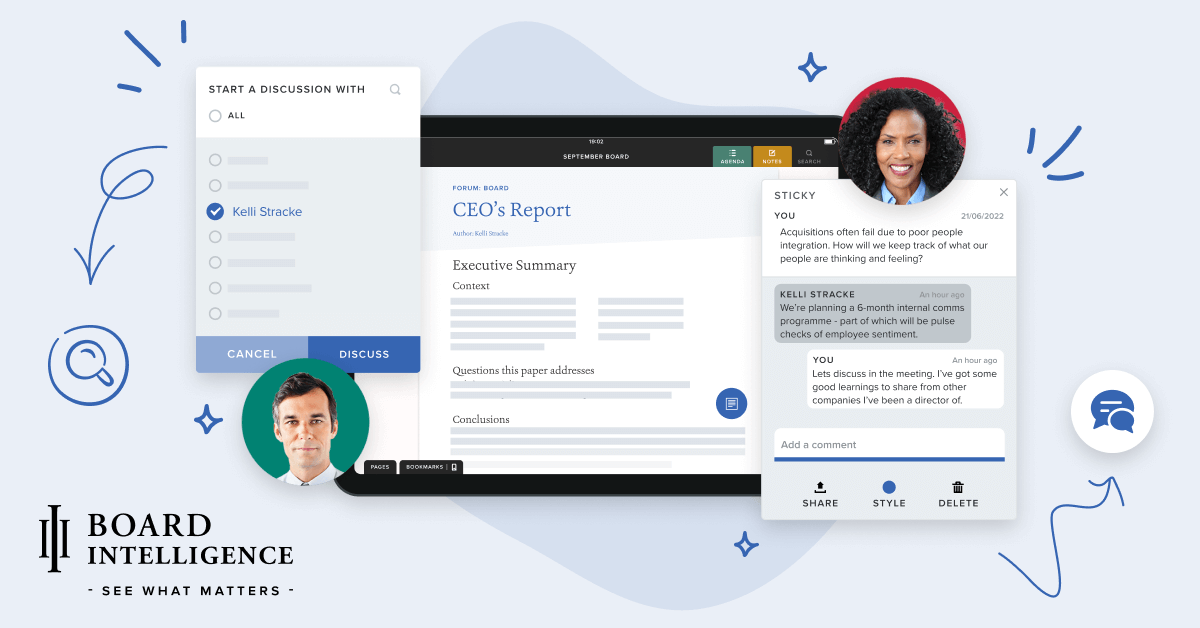Leadership meetings are the engine of organizational decision-making. They set direction, allocate resources, and shape strategy. Yet even the most experienced boards and executive teams often struggle with one recurring problem: disorganized agendas.
When agendas are unclear or overloaded, meetings drift off track, important topics are rushed, and decisions suffer. On the other hand, a well-structured agenda turns a routine meeting into a productive, focused session where every minute delivers value. Organized agendas aren’t just about order—they’re about outcomes.
The Hidden Cost of Poorly Structured Meetings
Every leader has experienced it: a meeting that runs long, covers too much, and ends without resolution. The problem usually starts with the agenda. When priorities aren’t defined, time is wasted on low-impact topics. When objectives aren’t stated, conversations spiral into unnecessary detail.
Disorganized agendas don’t just drain time; they erode confidence and focus. Board members leave feeling unproductive, while administrators scramble to capture outcomes that were never clearly outlined. Over time, this lack of structure can weaken accountability and stall progress.
In contrast, an organized agenda brings clarity, balance, and rhythm to leadership meetings. It sets the stage for stronger collaboration and better decisions.
Clarity Drives Better Preparation
An effective agenda begins before the meeting starts. When participants receive a clear, well-structured outline, they can prepare more thoughtfully. Directors can review documents, identify questions, and focus on the issues that matter most.
Preparation is what turns a meeting from an information session into a decision-making forum. With a well-planned agenda, everyone walks in ready to contribute. The result is sharper dialogue, shorter discussions, and outcomes that reflect informed consensus rather than on-the-spot thinking. Tools like Board Intelligence make this process easier by streamlining agenda creation, linking key materials, and ensuring everyone is aligned before the meeting begins.
Modern board meeting agenda software takes this a step further. It centralizes all agenda materials, automatically links supporting documents, and allows real-time updates. This ensures that everyone is working from the same information, eliminating the confusion that often comes with last-minute changes.
Prioritizing Strategic Discussions
Leadership time is too valuable to be spent on operational minutiae. An organized agenda helps filter what truly deserves the board’s attention. Strategic priorities—such as growth, risk, and performance—should lead the discussion, while administrative updates are shared in advance or handled offline.
Well-structured agendas allocate time intentionally, ensuring that major decisions aren’t squeezed into the final few minutes. This balance gives directors the space to analyze, challenge, and explore ideas without feeling rushed. When time is distributed with purpose, discussions stay meaningful and outcomes improve.
Improved Accountability and Follow-Up
Meetings without structure often end without clear next steps. Participants agree “something should be done” but leave without defined ownership. An organized agenda prevents that. By outlining objectives for each topic, it establishes expectations from the start—what needs to be discussed, what needs a decision, and what needs follow-up.
This clarity carries through to the minutes. When the agenda is structured, recording outcomes becomes easier and more accurate. Action items flow directly from agenda points, creating a natural thread of accountability. Leadership teams can review progress at the next meeting with confidence that nothing has been overlooked.
Stronger Collaboration and Engagement
Organization doesn’t stifle discussion—it empowers it. When participants know the structure and flow of the meeting, they can engage more effectively. Instead of wondering what’s next or debating how much time remains, the focus stays on ideas, insights, and outcomes.
Clear agendas also encourage inclusivity. By circulating them early, quieter voices have time to prepare comments or questions in advance. This creates a more balanced dialogue, where input isn’t dominated by the most outspoken members but shared across perspectives. The result is better collaboration and more holistic decision-making.
Consistency Builds Momentum
Effective meetings are consistent meetings. Organized agendas create a rhythm—each session follows a familiar pattern, making it easier to track progress over time. When every meeting has a clear structure, directors know what to expect and how to prepare.
This consistency improves momentum across sessions. Leadership teams can quickly revisit previous decisions, assess results, and move forward. Over time, these incremental gains compound into measurable improvements in performance and accountability.
Reducing Meeting Fatigue
A growing number of leaders report feeling drained by back-to-back meetings. Much of that fatigue comes from inefficiency—sessions that feel repetitive, unfocused, or inconclusive. Structured agendas counteract this by keeping discussions sharp and purposeful.
By clearly defining start and end times, prioritizing issues, and cutting unnecessary detail, meetings become shorter but more impactful. Participants leave feeling energized, not exhausted, because their time has been used wisely and their input has made a difference.
Technology reinforces this by automating the administrative load. Agenda planning tools handle scheduling, document distribution, and updates, freeing leaders to focus on the discussion rather than logistics.
Enhancing Compliance and Transparency
For boards and executives, governance and compliance are always under scrutiny. A structured agenda supports both by providing a documented framework for how decisions are made. Each item on the agenda can be linked to supporting materials, risk assessments, or policy references, creating a clear audit trail.
This transparency benefits auditors, regulators, and stakeholders who need assurance that decisions are made responsibly. Organized agendas don’t just make meetings more efficient—they make them defensible. They demonstrate that governance is intentional, structured, and aligned with best practices.
Technology as the Enabler
Creating and maintaining an organized agenda used to require hours of manual coordination. Today, digital tools make it seamless. Board meeting agenda software allows administrators to build templates, assign topics, and attach documents within minutes.
These platforms integrate with meeting minutes systems, so agendas and outcomes remain linked. Updates can be made instantly, and changes are visible to all participants in real time. For leadership teams managing complex operations, this level of organization isn’t just helpful—it’s essential.
By combining structure with technology, boards gain both flexibility and control, ensuring that every meeting runs smoothly and stays aligned with its goals.
Final Thoughts
An organized agenda is more than a schedule—it’s a roadmap for productive leadership. It turns scattered discussions into structured outcomes and transforms meetings from obligations into opportunities for impact.
When teams use digital tools to plan and manage their agendas, they eliminate guesswork, improve focus, and strengthen governance across the board. With board meeting agenda software, organizations can plan smarter, collaborate more effectively, and deliver results that matter.
In leadership, structure doesn’t limit creativity—it enables it. The more organized the meeting, the stronger the outcome.




